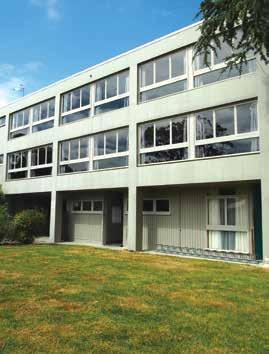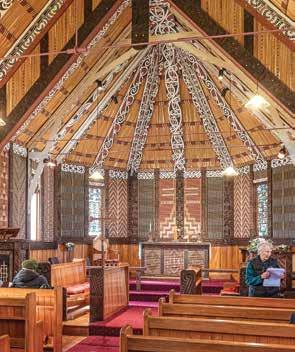
2 minute read
TRIVIA TIME

TRIVIA TIME

Q1
Take time out with 10 questions
1. St Paul’s Memorial Church at Pūtiki, Whanganui (pictured), shares an important history with other Māori churches and marae built under the vision of what influential and widely respected Māori leader to revitalise the arts of carving, kōwhaiwhai and weaving through the building of meeting houses, dining halls and churches from the 1920s?
2. Two exceptionally rare writing slates from the Kerikeri Mission Station dating back to the 1830s are included on the UNESCO Memory of the World documentary heritage register. One slate features an early waiata whakatau and the other a signature of who?
3. What is the name of the Historic Area geographically located at 52 degrees south, New Zealand’s southernmost point before the Ross Dependency?
4. Once a leading coal mining town, this place sits high on the edge of a steep incline railway once described as the eighth wonder of the world. It is also a Tohu Whenua place. Where is it? 5. While on Te Tai Poutini West Coast, which Tohu Whenua place (pictured) was also nicknamed Quartzopolis and the Town of Light?
6. What was New Zealand’s first National Historic Landmark, formally announced in June 2019?
7. The national Māori newspaper, Te Puke ki Hikurangi, was published from 1897 to 1913 from which marae recently listed as a wāhi tūpuna by Heritage New Zealand Pouhere Taonga?
8. What was the name of the economic assistance programme launched in 1950 aimed at Southeast Asian countries and to which this hall of residence at Massey University in Palmerston North (pictured) takes its name?
9. If you were in Parewanui, Bulls, in the Rangitīkei District, what Category 1 historic feature could you visit?
10. What Heritage New Zealand Pouhere Taonga cared for property has been, since 1886, the longest continual postal service in New Zealand?
Q5
Trivia answers
1. Sir Apirana Ngata (1974-1950), Ngāti Porou leader, land reformer, politican and
scholar. (CREDIT: MARK BRIMBLECOMBE/HERITAGE
NEW ZEALAND POUHERE TAONGA)
2. Rongo Hongi. Hariata (Rongo) Hongi signed the slate when she was aged 16. She was the daughter of Ngāpuhi chief Hongi Hika, and later married Hōne Heke. 3. Motu Ihupuku/Campbell Island. 4. Denniston Mine, Denniston. 5. Reefton. Historic Reefton was the booming commercial centre of quartz reef gold mining and the first place in the southern hemisphere to supply electric lighting.
(CREDIT: WEST COAST TOURISM)
6. Te Pitowhenua Waitangi Treaty Grounds. Heritage New Zealand Pouhere Taonga oversees the National Historic Landmarks Ngā Manawhenua o Aotearoa me ōna Kōrero Tūturu programme. 7. Pāpāwai Marae, 5km east of Greytown, in the Wairarapa. 8. The Colombo Plan. Colombo Hall was opened on the Palmerston North
campus in 1964. (CREDIT: KAREN ASTWOOD/ HERITAGE NEW ZEALAND POUHERE TAONGA)
9. The Scott’s Ferry Barge, which serviced the district from 1850 to 1908 transporting horses, cattle, sheep, coaches, produce and people. 10. Ophir Post Office in Central Otago.







